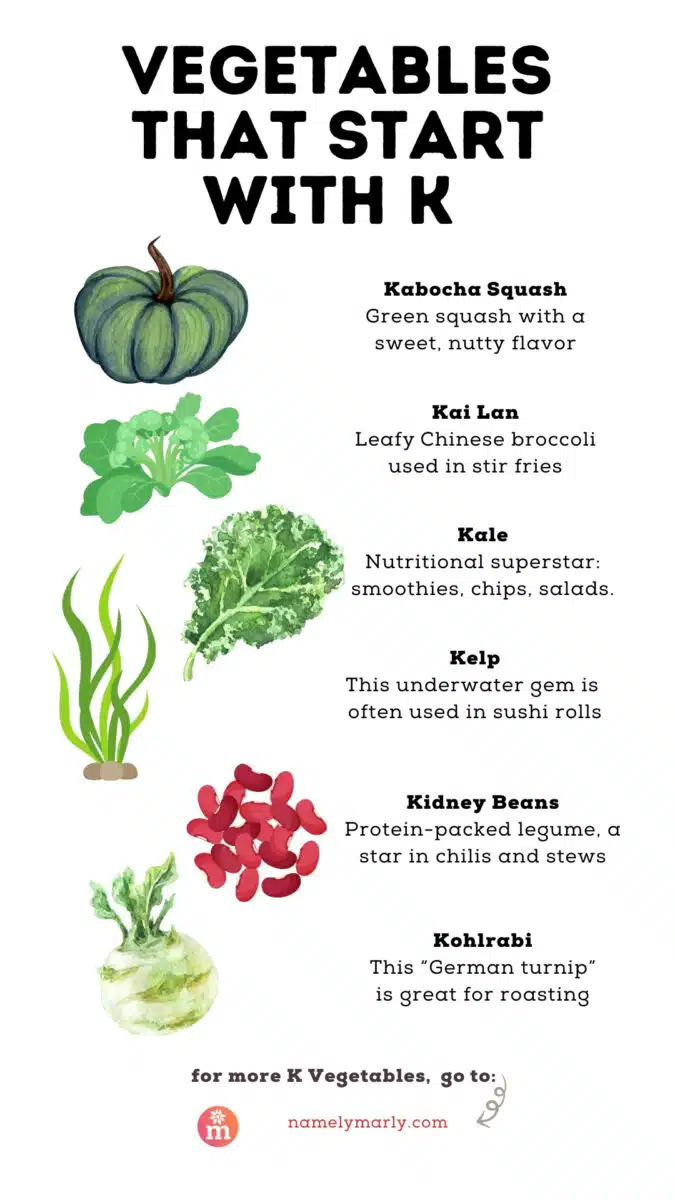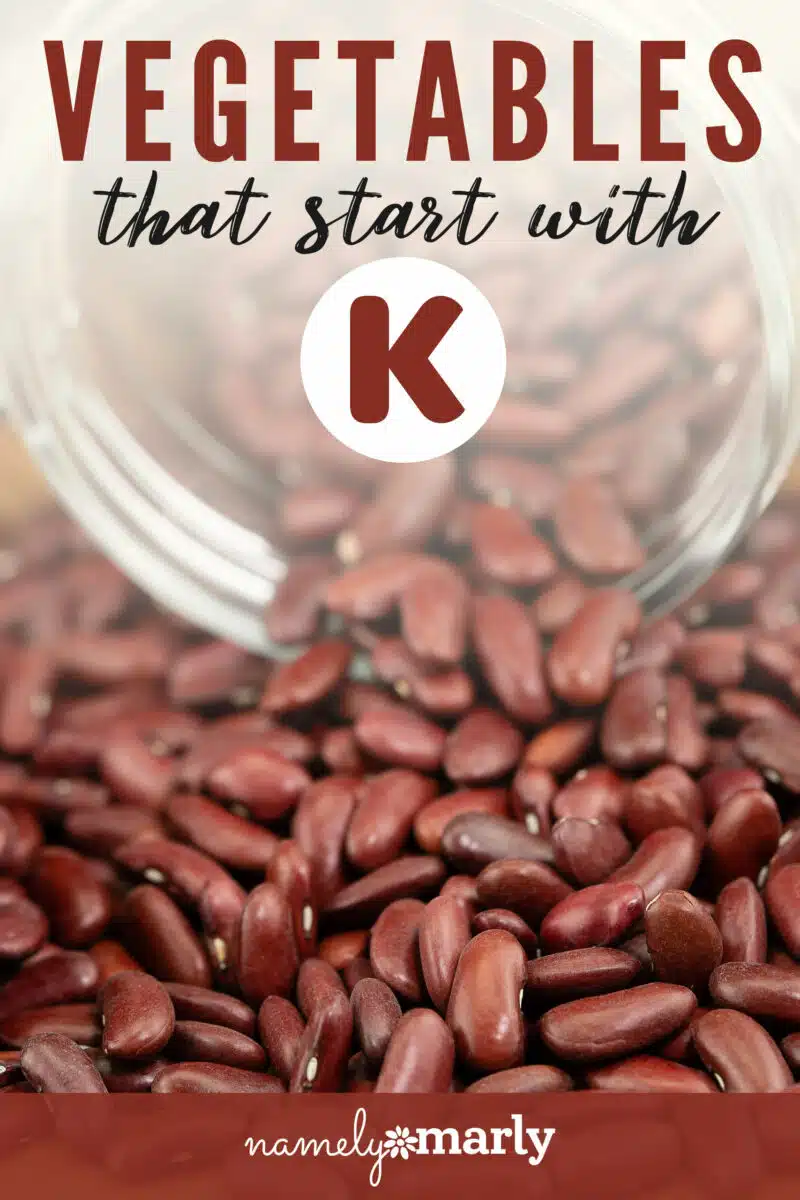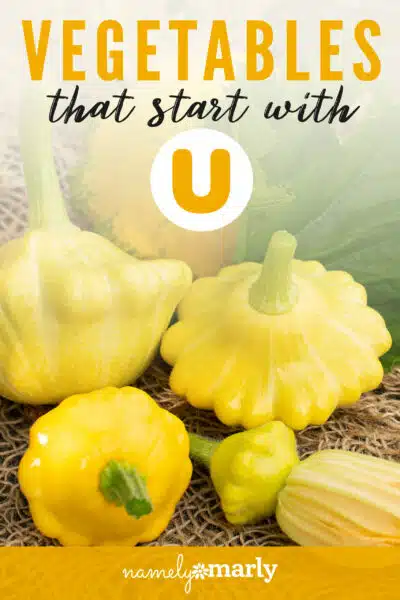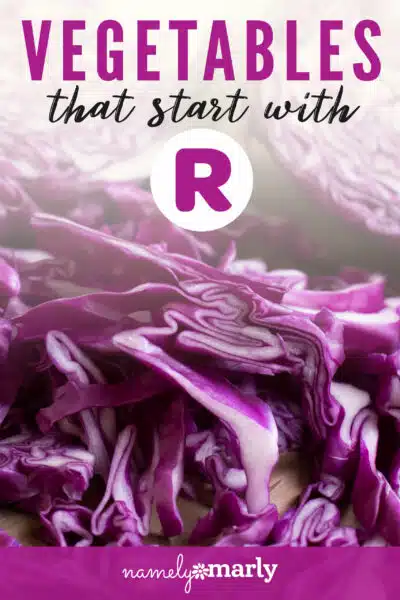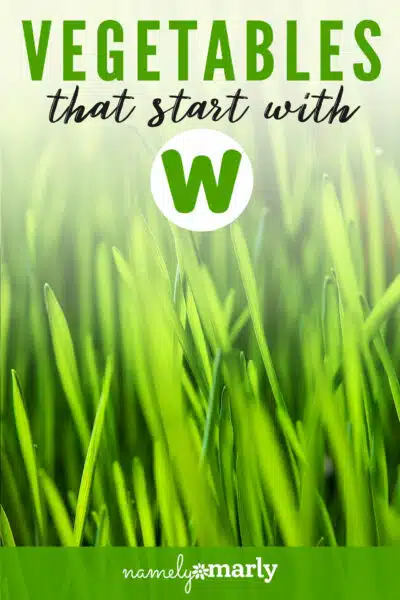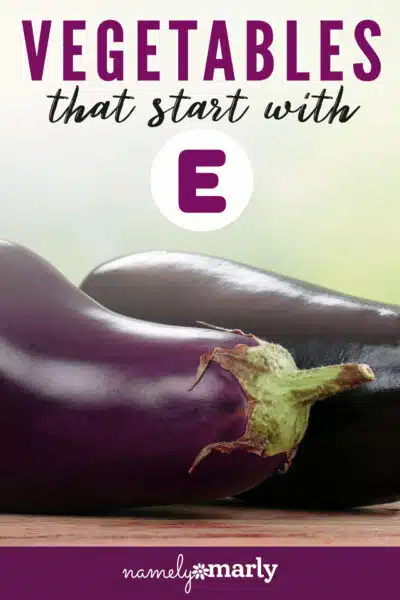Vegetables That Start with K
Are you looking to explore the world of plant-based cuisine while having fun with vegetables that start with the letter K? Whether it’s for a word game, trying something new in the kitchen, or simply expanding your plant-based horizons, we’ve got you covered. Here’s a delicious and diverse list of vegetables that start with K!
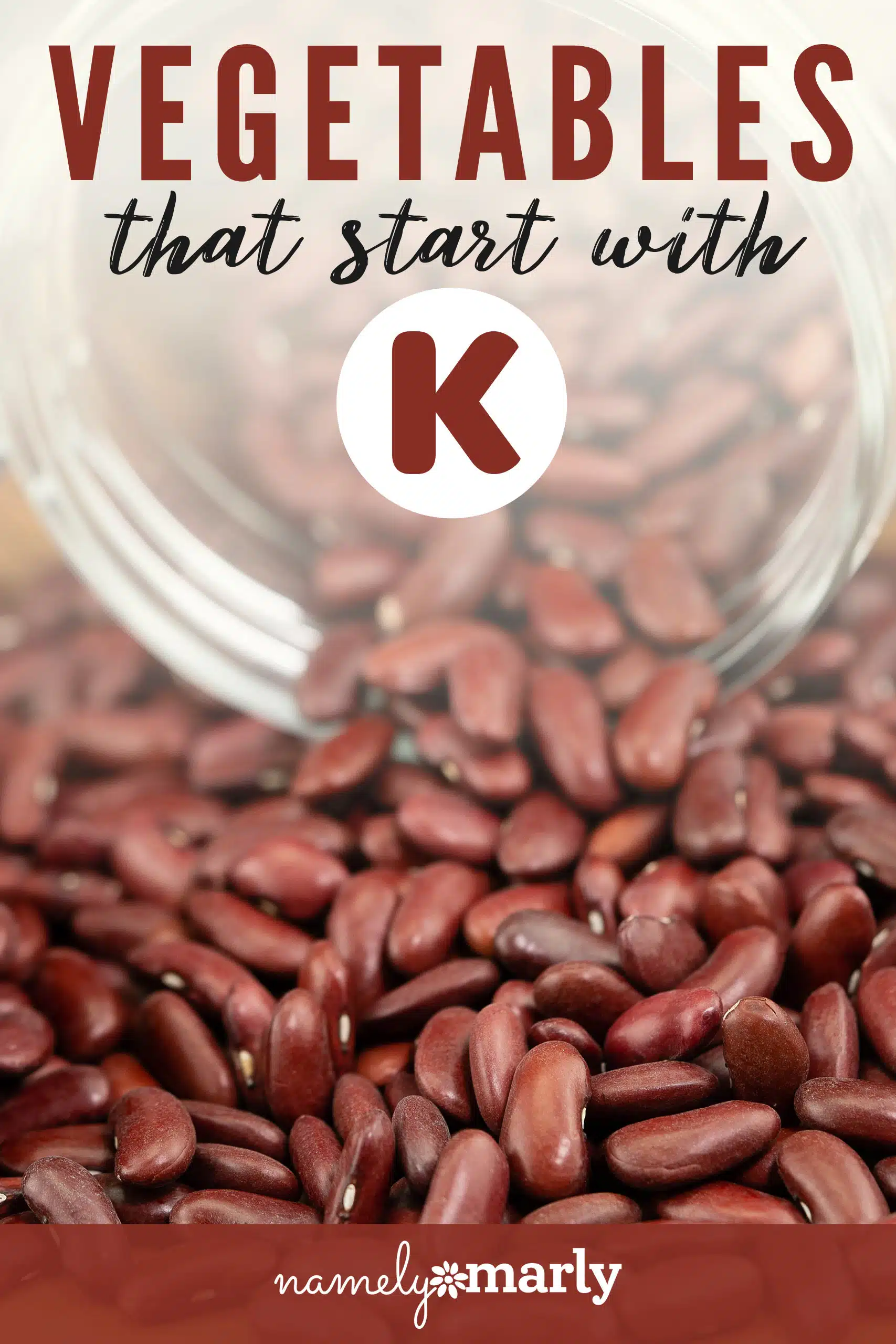
Being a vegan food enthusiast, delving into the rich tapestry of plant-based ingredients is a thrilling adventure. I’m delighted to invite you to join me on this culinary voyage, whether you’re on a quest for K vegetables in a word game or simply eager to embark on a vegetable exploration with me!
From robust flavors to nutritional benefits, K vegetables can be challenging or creative. Either way, they add diversity to your plant-based diet. Are you a seasoned cook familiar with various vegetables? Or maybe you’re a newbie looking to expand your repertoire. Either way, this guide will introduce you to some intriguing K veggies.
This post is part of my series, Increase your VEGGIE IQ. From kale to kohlrabi, let’s explore all of the tantalizing tastes these Vegetables That Start with K offer. Boost your veggie knowledge today with this quick and easy guide!
What’s missing from this list of vegetables that start with the letter K? Do you know others I should add? You can leave a comment below and let me know so I can add it to the list!
Trivia
What does the name “kolrabi” mean in German, and what part of the plant is typically consumed? Scroll to the end of this post for the answers!
1. Kabocha Squash
Kabocha Squash – Known for its rich, sweet flavor, kabocha squash is a versatile and nutrient-dense ingredient in various plant-based recipes.
You can roast the squash and drizzle with olive oil and a bit of brown sugar to serve. It’s also a great replacement for butternut squash in this vegan butternut squash soup recipe.
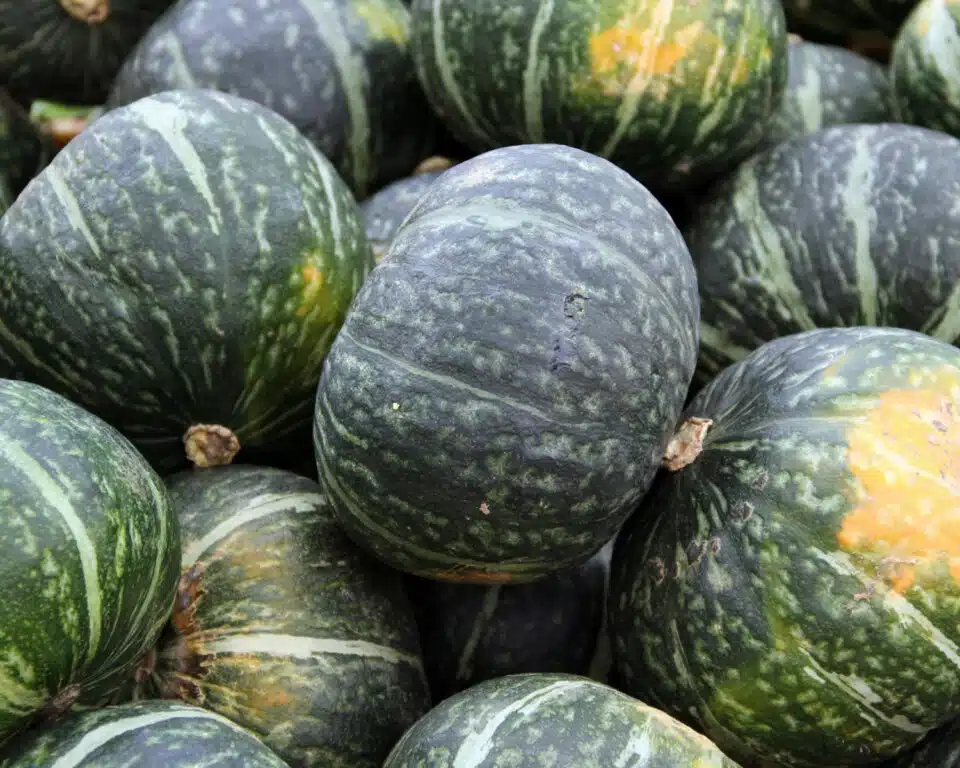
2. Kai Lan
3. Kai Lan – Also known as Chinese broccoli, this leafy green is a great source of vitamins and minerals. It’s perfect for stir-fries and side dishes.
You could add some steamed Chinese broccoli to this vegan tofu teriyaki stir fry.
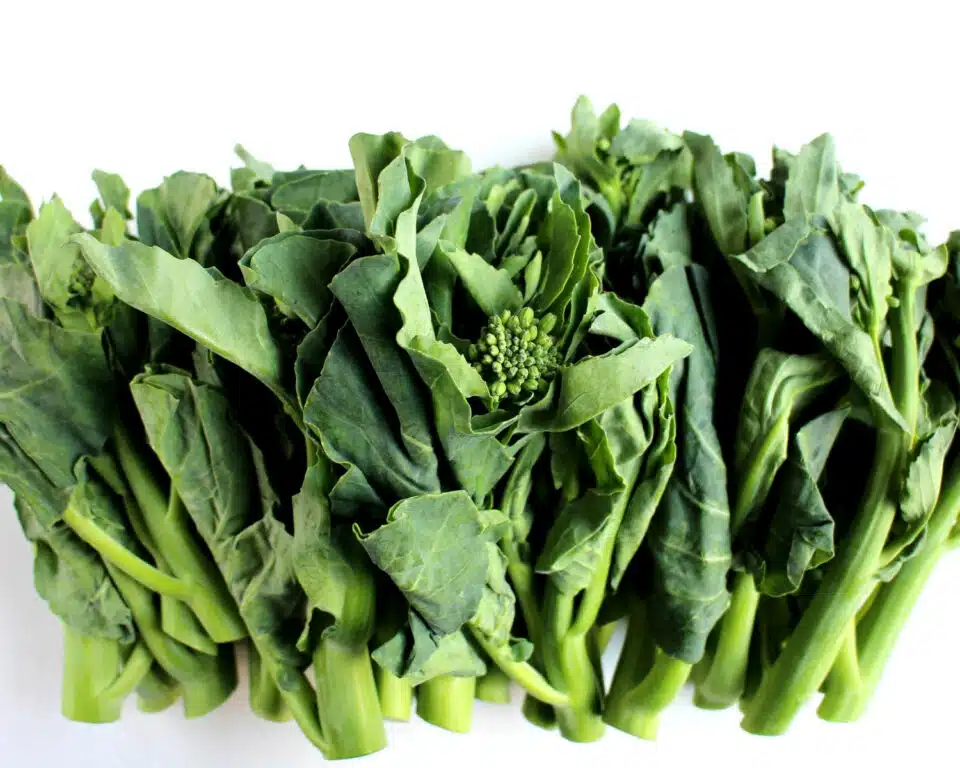
3. Kala Jeera
Kala Jeera – These seeds are similar to traditional cumin but with a slightly sweeter and nuttier flavor, making them an exciting addition to your spice rack.
You can add kala jeera seeds to this sticky brown rice recipe before serving it with stir-fries. You could also add it to this one-pot chickpea curry dish.
If you haven’t cooked with this spice before, I recommend starting with small quantities. You can always add more… But it’s not easy to take away what’s already been added!
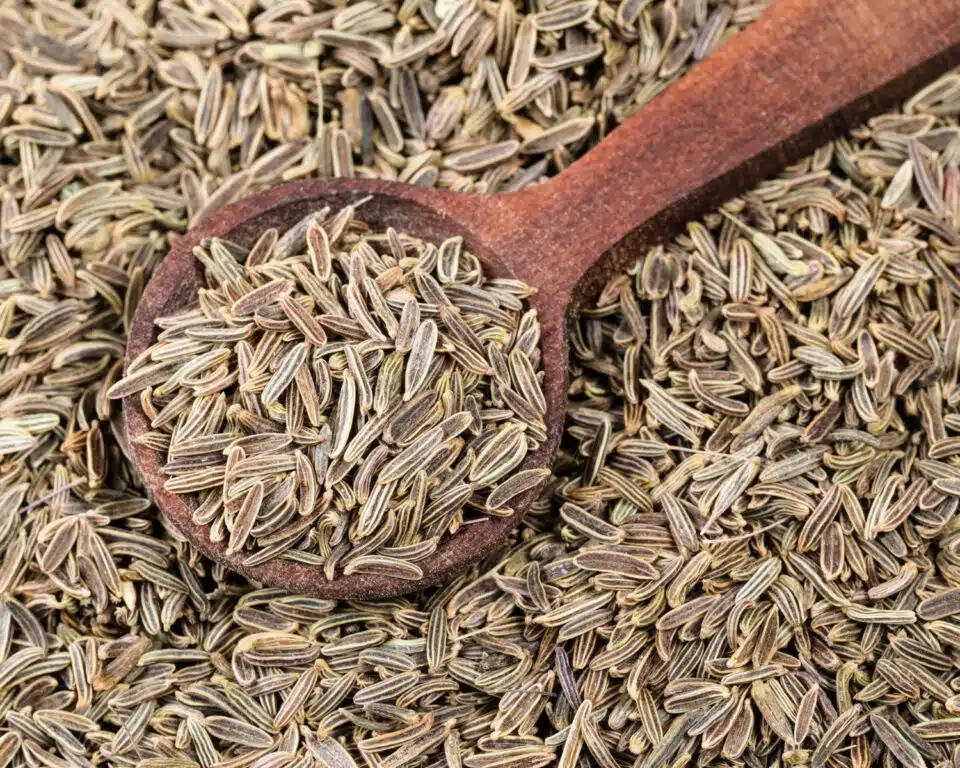
4. Kale
A superstar in the world of plant-based diets, kale is packed with nutrients and is incredibly versatile. Use it in salads, smoothies, or as crispy kale chips.
We use kale in our regular healthy green smoothies.
Storing Kale. When you bring kale home from the store, it’s imperative to know how to keep it fresh in your fridge. I love these tips from the Tasting Table on how to store kale.
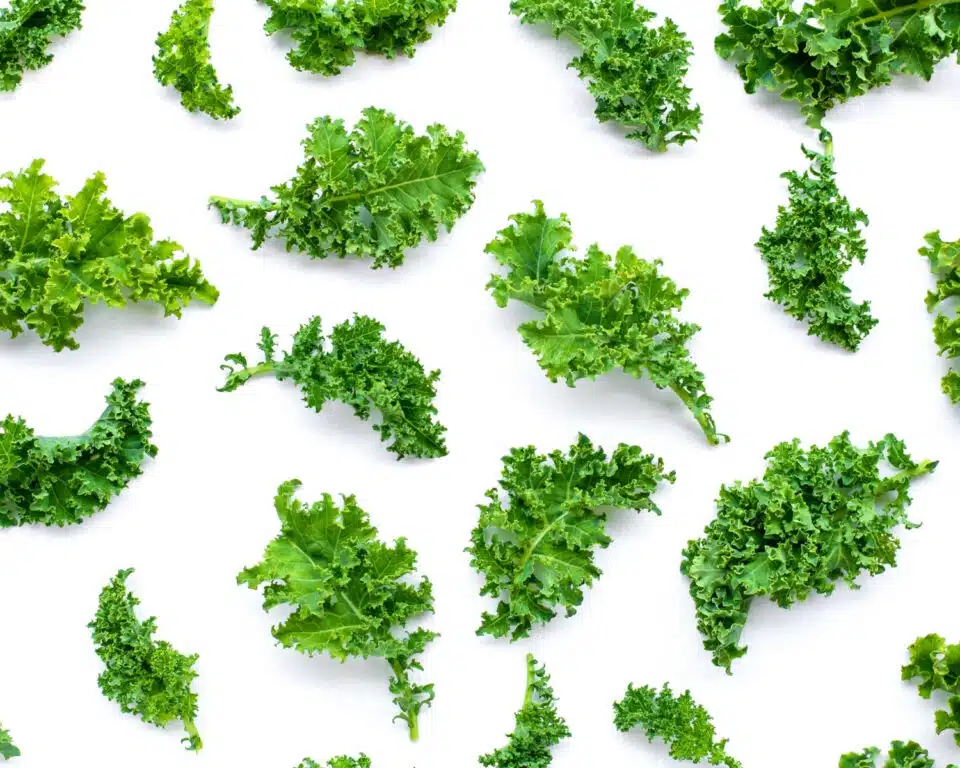
5. Kelp
This underwater vegetable is rich in iodine and minerals. It’s commonly used in sushi rolls and adds a unique umami flavor.
You can serve fermented kelp alongside some plant-based sushi.
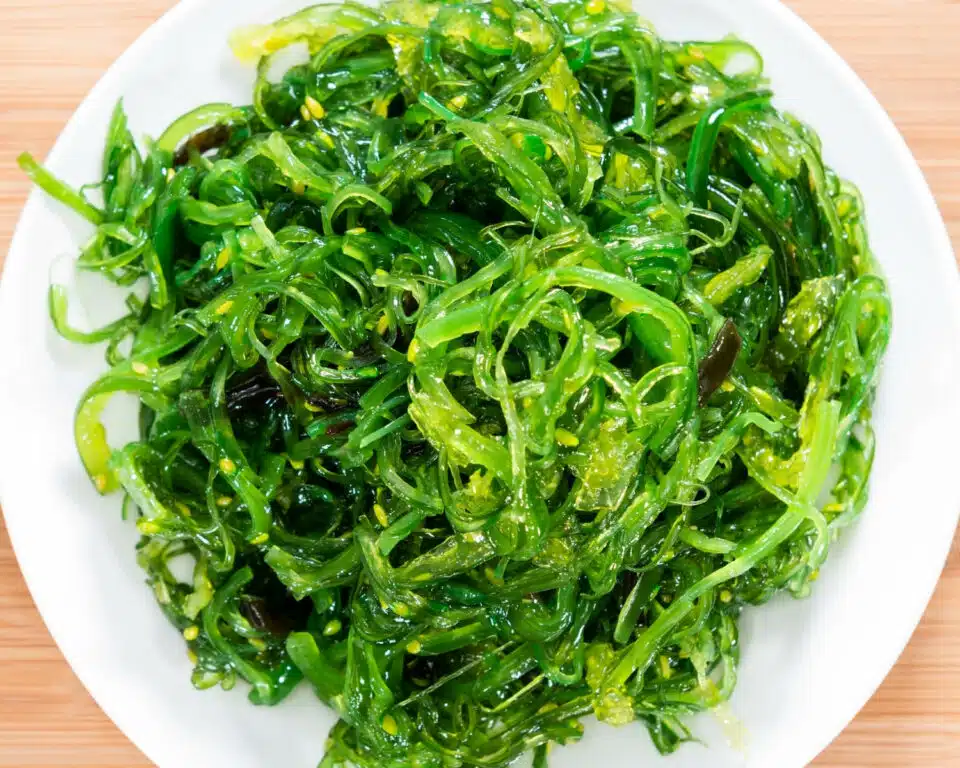
6. Kencur
A rhizome with a unique flavor, kencur is used in Indonesian and Southeast Asian cuisine, particularly in curries and stews. It has a flavor similar to ginger and is used in traditional medicine to reduce rheumatism pain.
It can also be calming to the stomach, very similar to ginger.
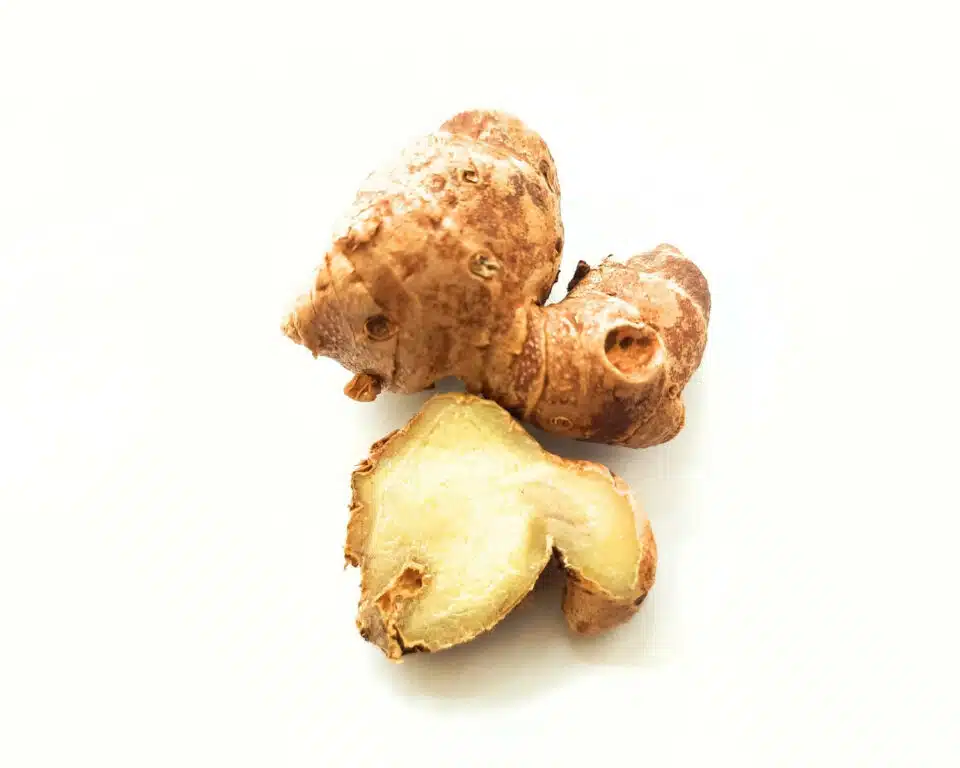
7. Kerguelen Cabbage
This cold-tolerant cabbage is an excellent source of vitamins and can be used in various cabbage-based dishes.
As with any cabbage, you can use it to create delicious and healthy vegan Cole slaw!
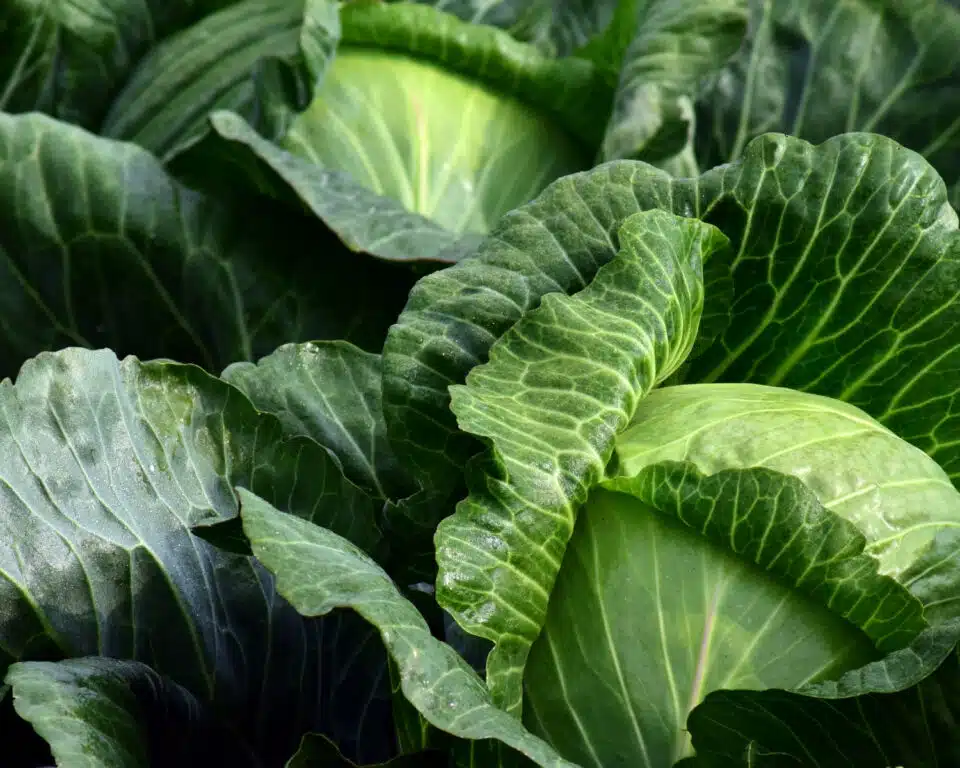
8. Kidney Beans
These legumes are not only packed with plant-based protein but also work well in chilis, salads, and stews.
Kidney beans are a favorite in our house. We use them in our regular meal prep to make Plant-Based Minestrone.
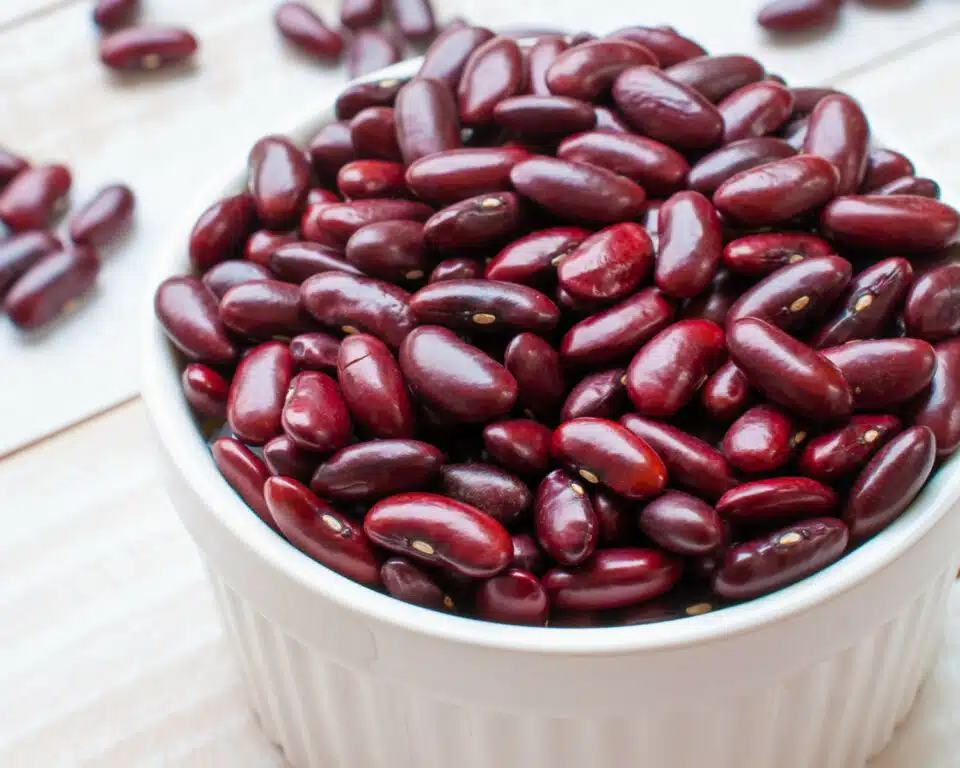
9. Kinh Gioi
Also known as Vietnamese balm, Kinh Gioi is a fragrant herb used in Vietnamese cuisine to add a fresh, zesty flavor to dishes.
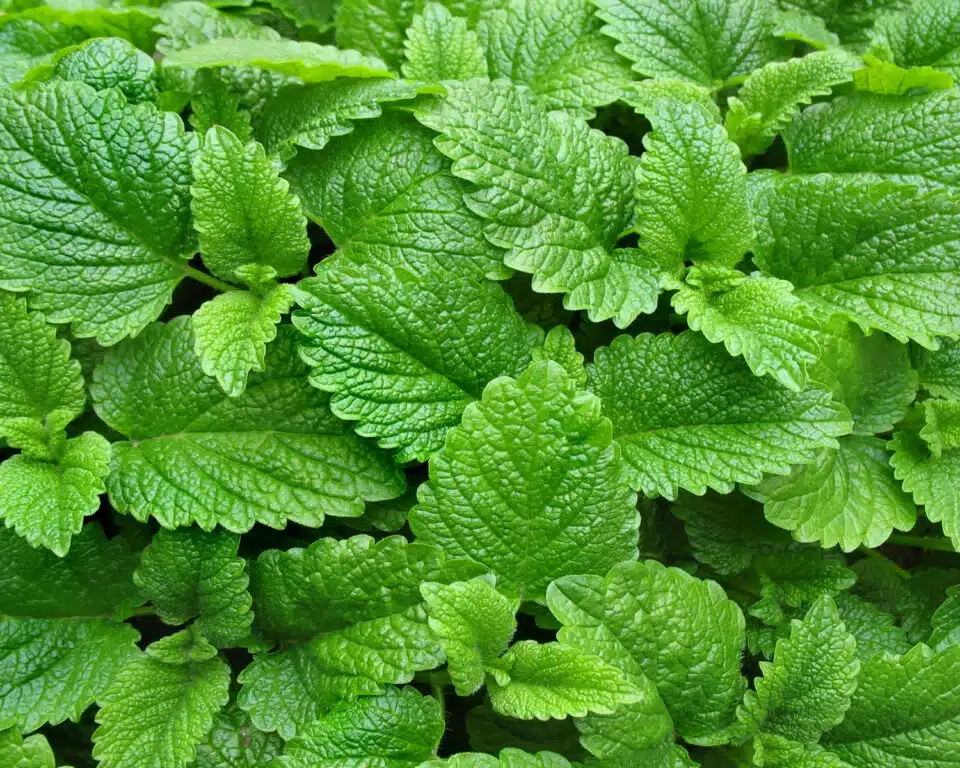
10. Kohlrabi
Often referred to as the “German turnip,” kohlrabi has a mild, slightly sweet flavor and is perfect for salads or roasting.
You can cut kohlrabi into cubes and add it to this plant-based roasted vegetable mixture.
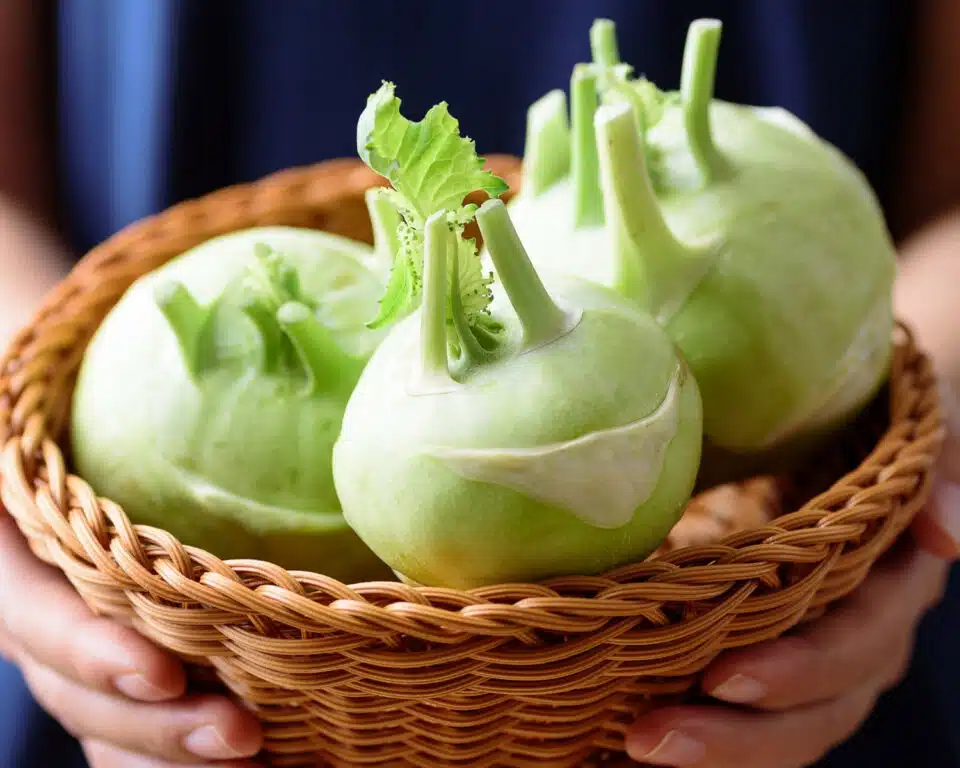
11. Komatsuna
A Japanese mustard green with a mild, peppery taste. It’s fantastic in stir-fries and sautés.
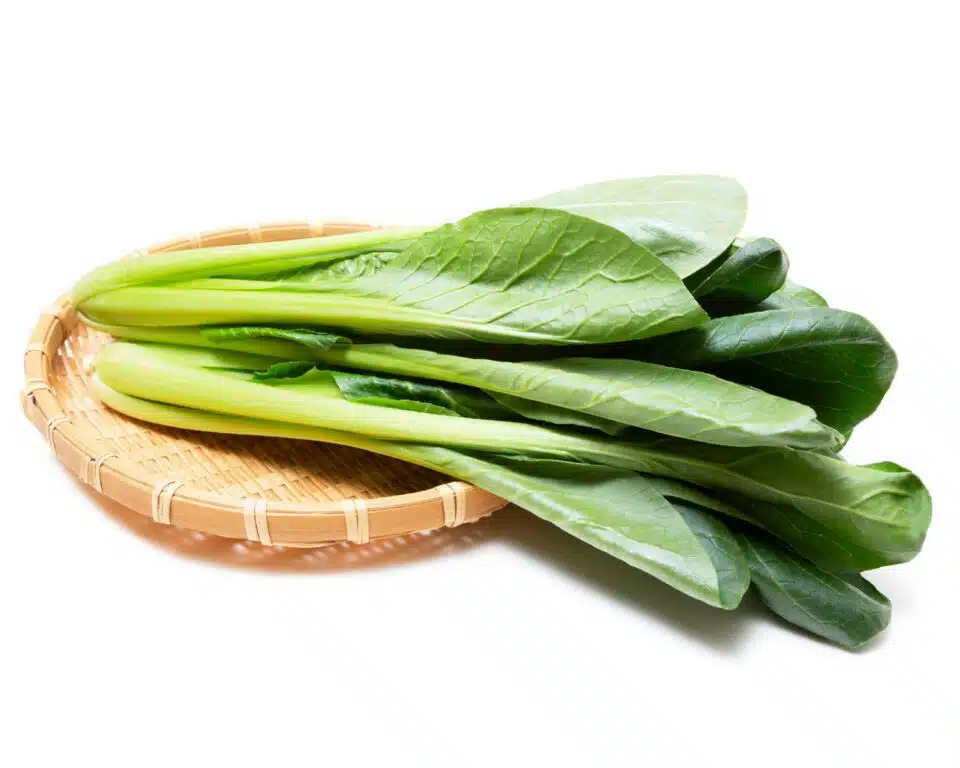
12. Kombu
A type of edible kelp often used in making broth and dashi, adding depth of flavor to plant-based soups and stews.
I can imagine adding bits of kombu to this easy miso soup recipe.

13. Kukicha Tea
Kukicha Tea – While not a vegetable, kukicha tea is made from the stems and twigs of the tea plant, offering a unique, slightly nutty flavor.
I love kukicha twig tea and have a big container of it in my cabinet. Someone told me once it’s loaded with calcium so it’s better than a supplement. I add it to other teas because it has a minimal flavor. That way I get the nutritional benefits of kukicha while drinking things like my Golden Turmeric Lattes.
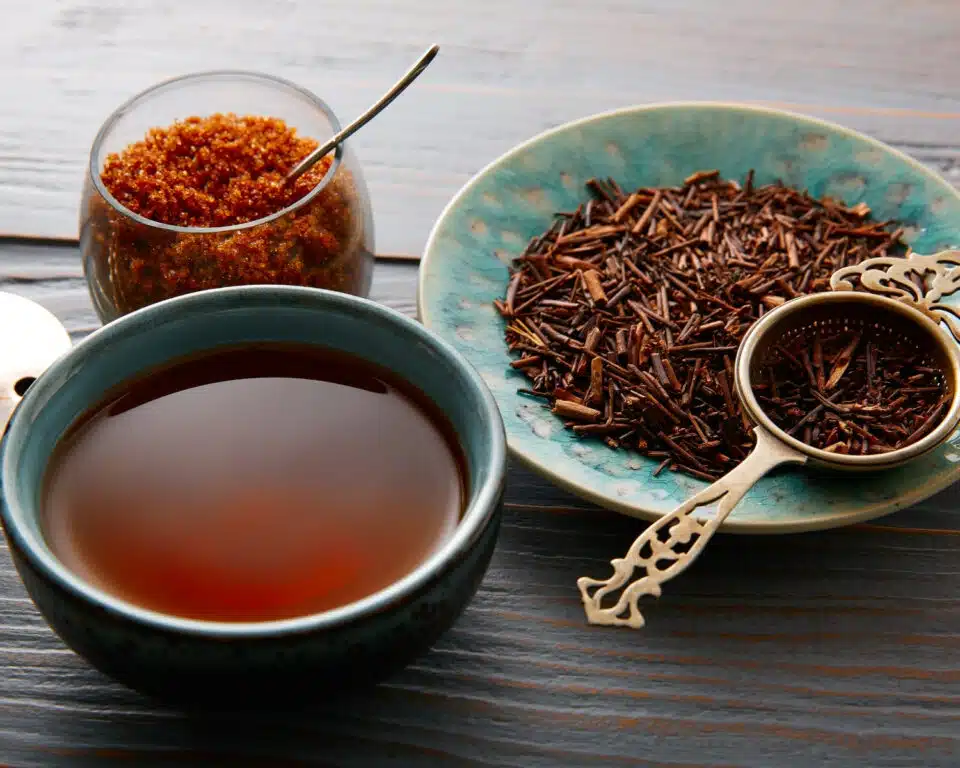
Trivia Answer
The name “kohlrabi” comes from the German words “kohl” (cabbage) and “rübe” (turnip). It’s fitting because kohlrabi is often described as a cross between the two. The edible part of the plant is the swollen stem, which has a mild, turnip-like flavor and can be used in various culinary applications.
More Alphabet Vegetables
If you love this guide to Vegetables that Start with the Letter R, here are more “alphabet soup” veggie lists to ponder:
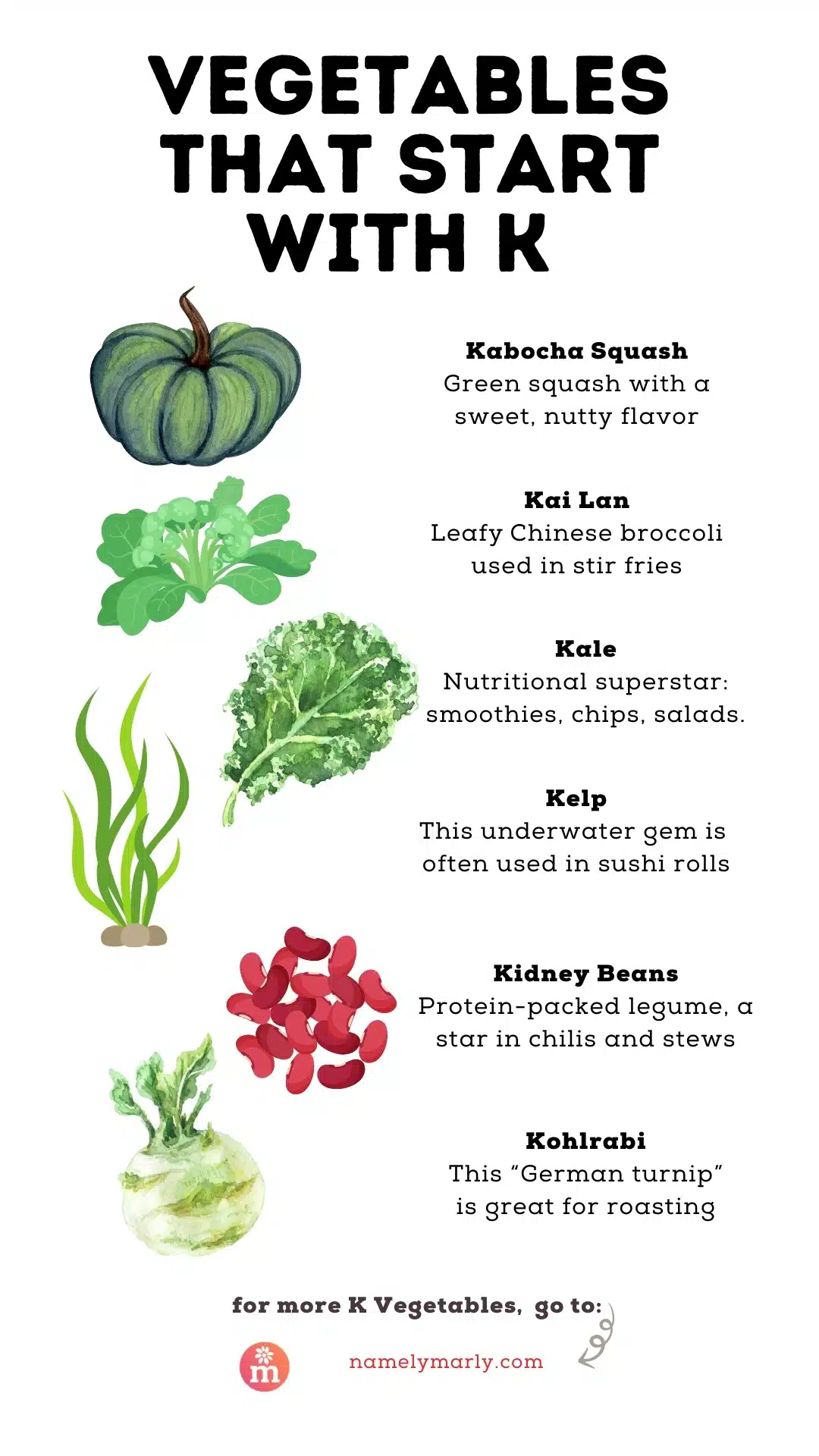
Conclusion
Now that you’ve got a delightful list of K vegetables to experiment with, get creative in the kitchen and explore the world of plant-based goodness.
Whether you’re adding these ingredients to your favorite recipes or discovering new dishes, the possibilities are endless. Don’t forget to share your culinary creations with me on Instagram via @namelymarly. We’re all embracing a plant-based lifestyle with zest!
